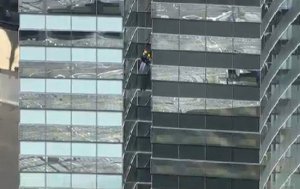Can a bowline with a Yosemite finish be a recipe for disaster? According to the video below the answer is a resounding yes. That is, of course, if you are prone to loosely and incorrectly tying and dressing your knots. I think there are quite a few knots that would come undone given those set of circumstances. You can read about the inspiration for this posting of mine at these two climbing forums:
Does this mean that it is a bad knot? I would argue that it is (k)not. It could be argued that it might not be the best thing to use as a harness tie in for people who are only using it for climbing. But to argue that one usage against the effectiveness and efficiency of the many variations of this knot when used for rescue, seems a like it might be limiting yourself. For instance, you can tie on bowline on the bight with a Yosemite to create a quick rope anchor, around a tree for example, with a bight to be used for connecting your friction device to; or use a Portuguese bowline to anchor an A frame as shown in the last video. I would(k)not discount a whole series of knots just because one variation of it does not fit one specific use. I might be preaching to the choir, but I still wanted to get it out there. Please feel free to leave a comment if you have any thoughts on the matter.
Here is the first video of how not to tie a bowline with a Yosemite
Here is are two video sfrom R2T friend Eric Campbell. One on how to tie a “snap bowline” with a properly tied Yosemite and the other, a couple of bowline variations for anchoring
Lastly, you can see in this video, around the :17 mark, a Portuguese bowline (with a bight and Yosemite) used to anchor the A Frame and create a rearward facing bight to attach the 3:1 tensioning system to. To do this with a family of 8 knots would take forever, not be nearly as clean, and is sure to eat up a ton of rope.






